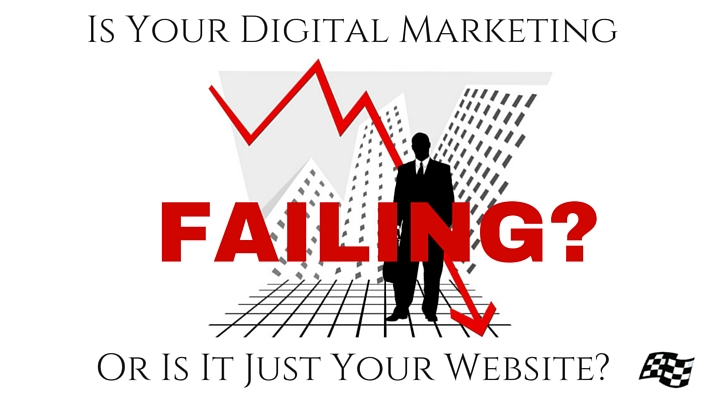
Not too long ago, a prospective client came to us because they wanted to get more leads and sales online.They were doing great offline, but their online conversions just weren’t happening, and it was starting to affect their bottom line.
Of course, this isn’t new for us. Most prospects come to us because they want to grow their web presence. That’s what we do. But in this particular instance, there was more going on than meets the eye.
Typically, businesses know they want to increase their online exposure. They are looking for SEO, social media or other forms of online marketing that will help drive traffic to their website through search and other means.
When assessing the needs of a new prospect or client we start by looking at a few things:
- Current presence on the web, including search and social
- Site architecture issues that may be hindering traffic
- Site usability issues that may be hindering conversions
The Web Marketing You Need Most
In many cases, all three of these areas need attention. If we find significant issues on the conversion aspect, we will first look to see what can be improved with the current site. If we are in a worse-case scenario, we may recommend that the site itself needs to be re-designed or developed.
We usually only do that as a last resort. Most site issues can be fixed without a major re-design. But not all can.
But what made this recent prospect different is that they had recently rolled out a brand new site design. Yes, they needed to improve their web presence, but the biggest problem was the huge drop in conversions they saw when the new site when live.
From my experience, this is the worst position for a business to be in. They just spent thousands of dollars on a new website that is supposedly better than the old one, but the old site actually did a better job of converting. This means, thousands of more dollars may need to be poured into the site just to fix it.
At this point the business has three options:
- Scrap the site and go back to the old one. Unfortunately, this is usually not possible as old designs are not often kept around to revert back to.
- Find and fix the problems on the new site no matter what the cost.
- Scrap the site and build a new one.
Imagine buying a brand new car, and as soon as you drive it off the lot you’re told you need to take it to the shop for thousands of dollars worth or repairs. The owner of the car is stuck with it (sorry, no refunds or lemon laws).
Option #2 above is usually cheapest, but not always. We’ve had to scrap mostly developed sites before because the issues were unfixable with the current platforms. It’s not ideal, but sometimes it has to happen.
The problem, though with keeping the current site and trying to fix it is that it requires a lot of problem solving.
Best Practices
The first place I suggest to start is with best practices. No, there isn’t one giant rule book for such things (though this comes close), and any set of best practices will differ depending on who is outlining them, but any list is a good place to start, and multiple lists are even better.
A decent list of best practices can keep your developer busy for a good amount of time. It’s important, however to measure the changes as you make them. If possible, make the changes one at a time and give yourself time to measure the results, though that’s not always possible if you’re bleeding money. Most best practices will provide some value, so if you have to move through them quickly, go ahead and do so. I’ll reiterate, though, that it’s more valuable to do them slowly.
Once you are able to implement best practices, you’ll likely see improvement, though you’ll need to determine if it’s enough of an improvement. If not, more work is to be done.
User Testing
The next step is to start running actual user tests. This is where you create scenarios and pay actual shoppers to get on your site and try to accomplish some goals. As they do this, they record their thoughts and experiences.
You can get a lot of first-hand knowledge by doing these user tests, which can show you many of the frustrations that shoppers have. But be careful. As with anything, you have to have enough data to support any change. One person’s frustration doesn’t automatically warrant a change in your site. You’ll often get conflicting thoughts and suggestions, so the goal is to aggregate enough user data to ensure you can make a strong case for making any specific change.
And here is where I strongly suggest you measure the impact of each and every change. It’s quite possible that two changes can cancel each other out, giving you no improvement in results. But because you did them both at the same time, you will never know that just one of those changes improved your conversions significantly!
We all want more sales, but the path to get them isn’t always linear. A good web marketer can help you sort through the issues to determine which path is the best path to take at any given time in your web marketing efforts. Sometimes an all-hands-on-deck approach is needed, but not always.
The bottom line is that every situation is different. Where you may think you need more traffic, you really might just need a better conversion rate. If that’s the case, you’re efforts are better spend there before investing in anything else.

2 Responses to Is Your Digital Marketing Failing Or Is it Just Your Website?